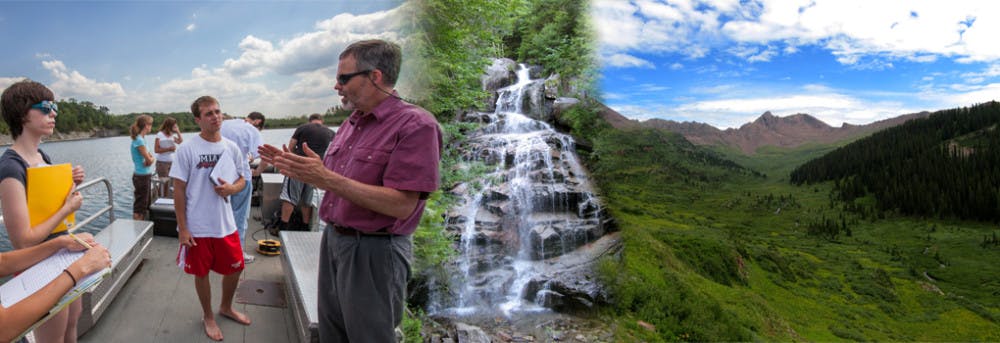
In recent years, a phenomenon has emerged regarding watershed contamination. Watersheds, which are areas of land possessing a set of streams and rivers that drain into a single larger water source, have become increasingly contaminated with foreign chemicals that deteriorate aquatic ecosystems.
At Miami University, the Center for Aquatic and Watershed Sciences has been working to raise awareness and develop research in order to prevent further aquatic pollution.
Many are unaware and unable to define what a watershed is and its significance. Surprisingly, the Earth as a whole is considered a watershed simply because all streams feed into a single large body of water. For instance, given that watersheds are interconnected, actions in Oxford, Ohio will eventually reach as far as the Mississippi watershed.
This aquatic transition from smaller to larger watersheds demonstrates the influence human activity has on bodies of water miles away. The Center for Aquatic and Watershed Sciences discovered that the local sewage treatment plant has been tested for acid rain, caffeine, and various medications due to the contamination from upstream locations. The test provides evidence that even a seemingly benign action on land, such as taking medicine, can ultimately pollute water systems. This becomes detrimental when aquatic ecosystems are fouled with chemicals from distant locations, consequently destroying natural habitats.
Not only are ecosystems compromised, but clean drinking water also becomes toxic when severe contamination occurs. An example of such a water crisis took place in Toledo, Ohio when according to a New York Times article, a “…slug of toxins and the loss of drinking water for a half-million residents…” occurred because “Algae fed by phosphorus runoff from mid-America farms helped create an oxygen-free dead zone.”
CBS News explained that the damaging effects of oxygen-free dead zones are created when dead algae decomposed by bacteria sink to the bottom of a body of water. Consequently, the bacteria deplete the water of oxygen and destroy the homes of various aquatic organisms.
The Center for Aquatic and Watershed Sciences at Miami University unifies students studying anything from environmental earth science to chemistry in order to pursue extensive research on the connection between land action and bodies of water. This is an educational program that allows students to further their understanding of worldwide watersheds.
Mike Vanni, the director of the program, holds a large map of Pleasant Hill Reservoir Watershed, Ohio as he passionately explains the prominence and importance of watershed research. The published professor imparts his knowledge on aquatic food webs as well as harmful algal blooms on the center. With his help, the center is constantly making new discoveries that bolster the public’s understanding of various bodies of water.
“As a group we have a lot of people working on local ecosystems in Ohio, but we also have people working on streams in Mexico, lakes in Pennsylvania and Antarctica…we have a group of people working in diverse aquatic ecosystems around the world” Vanni said as he explained the growth of the Center for Aquatic and Watershed Sciences.
Vanni suggested that water ecosystems have become increasingly prominent because, “We first recognized water quality problems during the 60s and 70s, and we solved the easy problems, but now we face harder conflicts, for example water scarcity.”
As students, it is vital to recognize the lasting impact actions on land have on aquatic environments. Vanni affirmed that natural ecosystems are all interconnected. Researching local water reservoirs provides deeper information on fundamental watershed systems, and it can lend insight to how society can improve water quantity and quality.
Miami University promotes the research and awareness of local and national watersheds in order to support the preservation of clean water and sustainable habitats for aquatic organisms. Environmental student organizations are just one way to promote the awareness of the importance of watersheds.
The involvement of student organizations, in conjunction with heightened research and development, will promote environmental awareness and help illuminate the significance of watersheds.
Photo Courtesy of: Miami University CAWS
The Importance of Watershed Science

